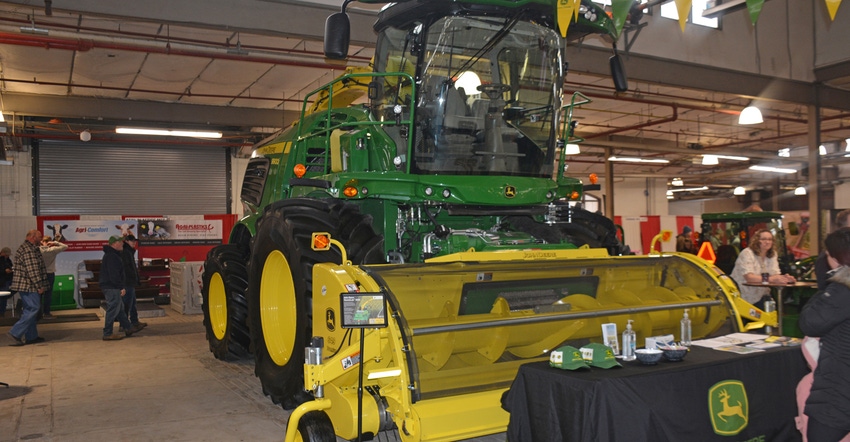
What does the future hold for forage tools? If you ask representatives of John Deere, more high-capacity machines might be on the horizon, but that really depends on what customers want. And if a recent meeting at New York Farm Show was any indication, that’s still an open question.
“I think the one thing is that the higher-horsepower question is still open for a lot of people, which means that they want a little bit more capacity,” says Tim Meister, John Deere’s marketing manager for self-propelled forages and heads. “But it's not for everybody, so that's one of the things that we have to weigh, is how many people are actually looking for more productivity than we have today.”
Meister and Chase Milem, the company’s marketing manager for hay and forage, met with about 100 growers and dealer representatives at New York Farm Show, the latest stop on the company’s face-to-face tour with U.S. customers, which this year replaces the customer fly-in to Germany. Two representatives from John Deere’s German operations, including an engineer, joined via Zoom.
Other similar events have been held in Texas, Iowa and Wisconsin, with another scheduled in Michigan.
It’s been three years since the company launched its 9000 series self-propelled forage harvesters at Farm Progress Show in Boone, Iowa. These forage harvesters — ranging from the 9600 at 616 hp to the 9900 at 957 hp — can handle more than 400 tons of forage per hour and have Tier 4-compliant engines.
Last year, the company added a new model to its 9000 series — the 9500 — with an 18.0-liter engine. Previous models had a V12 24-liter engine.
Meister says the trend to final Tier 4 standards on self-propelled forage harvesters has matured. Now the focus is developing better technologies to take over more and more functions on each machine.
“While they're [customers] not maybe ready for a totally autonomous forage harvester, they want more and more things automated,” he says. “And anytime that we can make something more automatic and faster to be automatic, that's a trend that I see, that customers are asking for creature comforts more and more in forage harvesting.”
Meister says these events are designed to get customer feedback on current products, as well as future projects the company might explore down the line.
“It gives us an opportunity to get out and get some information from customers on what they like about their current machine, what they like to have changed, and also it gives us ideas on future product lines that we already are working on today,” he says.
Milem was vague on whether the company was launching any new forage products later this year, only saying that “some new things are coming.” About two years ago, the company saw a complete reorganization, which he says has better focused the company’s hay tools and forage segment.
Meister says the amount of equipment on today’s dairy farms, especially large dairies, means there will be opportunities for the company in this important segment.
“It's surprising to a lot of people in our company how much equipment is on a dairy when you're talking about the feeding and planting, when it's an entirely encapsulated organization where they're doing everything for themselves. It's a phenomenal amount of equipment, and likewise, it's the same for somebody who's just a contractor,” he says.
“A lot of people are doing more than just custom harvesting. They're doing custom planting. They may have custom combining, and it's a lot more diversified, so the portion of the customer segments that we work in with being a traditional dairy that owns a forage harvester and/or traditional contractors in New York, they're buying a lot more equipment than just a self-propelled forage harvester. And I think that's a unique situation that we don't always see on, I would say, a traditional grain farm in the middle of Iowa.”
About the Author(s)
You May Also Like






